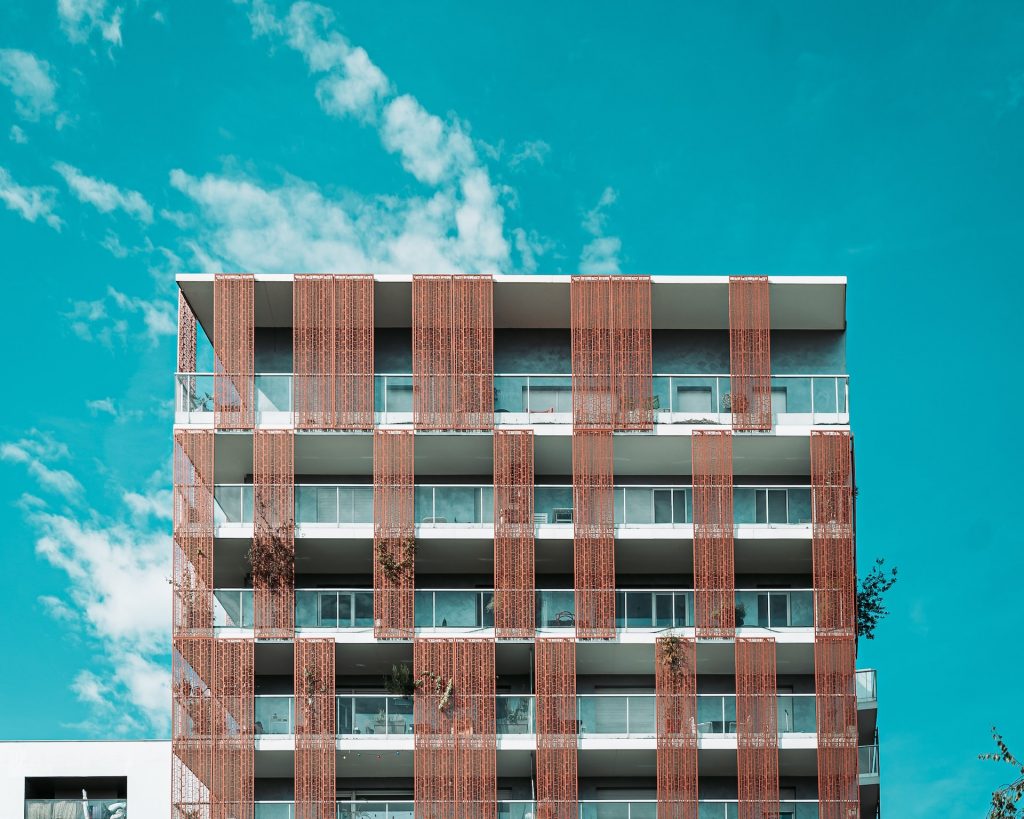
Multi Tenant Architecture For SaaS – Why And How To Get Started
Julian Wallis
12 min read

The rise of Software as a Service (SaaS) applications means traditional on-premise applications are pushed towards the legacy side of things, partly due to the single instance and multi tenant architecture used.
As the benefits of subscriptions and centrally-hosted applications become more pronounced, companies are increasingly turning to SaaS for their business solutions. Whether you’re a small or large enterprise, Salesforce, ZenDesk, Dropbox, Slack, HubSpot and MailChimp have quickly made themselves household names amongst users who value efficiency and scalability. And all of them leveraged multi tenant architecture for their SaaS applications!
What does it take to create such an application? In this guide, we’ll explore various architecture options available today, focusing predominantly on the multi tenant iteration, as well as delve into some notorious challenges associated with building your own SaaS app – fasten those seatbelts!
What Is Multi Tenant Architecture? 👫🏼
As the business world shifts into a digital landscape, SaaS applications are gaining traction as an incredibly secure approach to streamlining IT maintenance and troubleshooting. But have you ever wondered what multi tenant architecture is and why it could be the best for your company?
Software as a Service (SaaS) is a cloud-based distribution model allowing end-users to access applications remotely. You may have come across single and multi tenant architecture before. But have you wondered what tenancy has to do with software services?
Essentially, “tenancy” is a clever analogy for exchanging computing resources in a software environment, where tenants represent the users or “neighbours” living in an apartment building or a societal community.
A Multi tenant architecture system for SaaS is a software application structure where the same instance of the software is used to serve multiple customers at once. By relying on a single example of an application, organisations have the added advantage of scalability and increased efficiency compared to traditional deployment models.
Multi tenant architecture simplifies ongoing maintenance and supports rapid deployment, enabling users to be up and running quickly with minimum effort. Multitenancy also allows for centralising customer data, helping organisations to customise their services for each customer to meet their unique needs and provide a tailored experience.
Multi tenant architecture has importantly opened up new opportunities for both organisations and their customers because it allows organisations to provide their services faster and more efficiently while also delivering cost savings that come from having a single application deployed on one server than multiple versions on multiple servers.
Some of the biggest companies in the world use this software architecture model, including Slack, Atlassian, Salesforce, Netflix and Gmail, among countless others.
The Types Of Multi Tenant Architecture 🔡
There are currently three different versions of multi tenant architecture designs used in SaaS products. These mainly differ from one another in terms of the technical complexity of the model and the costs incurred to design and set them up.
🔨 Sole Database For One Application Instance
This multi tenant architectural style uses one database and application instance to host tenant applications and store subsequent data. The design and setup are the cheapest and least technically sophisticated of all multi tenant models whilst offering improved scalability for increased tenant count.
A notable drawback of this multitenancy architectural concept is that it suffers from the “Noisy-Neighbor” effect, which occurs when the application instance uses the majority of available resources, causing network performance issues for others on the shared infrastructure.
⚒️ Multiple Database For One Application Instance
A step up from the previous version, here, a single application instance uses multiple databases. Each tenant has an individual database maintained independently and exclusively from others in the shared system.
Despite being more costly to set up and design, this model offers plenty of value, especially when data from multiple tenants must be computed separately. A significant disadvantage, however, is that scalability is compromised as you’ll have to request compute node additions.
✨ Multiple Database For Multiple Application Instances
We hope you see a pattern forming here! The apparent third and final multi tenant architecture model stores data in multiple databases. Each tenant has a separate application instance setup on their end, meaning that each app instance will have its separate database.
Easily being the most technically complex and expensive multi tenant architecture system, it offers the most robust security benefits and the highest control and management capabilities as a positive by-product.
Single Tenant Vs Multi Tenant Architecture ⚖️
How is single tenant architecture different from multi tenant architecture, and which is better? Let’s quickly run down their key features, weighing in on their pros and cons.

👤 Single Tenant Architecture
In a single tenant architecture system, the tenant essentially has complete control of an application, all customer data and interactions are separate from every other tenant, and customers aren’t connected in the same way as tenants of a shared system typically would. This is because each client uses a single isolated database, storage and web server.
In a single tenant SaaS architecture system, the application is focused on one customer at a time. The dedicated software instance serves the user with a single application fetching data from one sole database, meaning there is no sharing within the development environment.
Single tenant architecture is the perfect solution for businesses that prioritise security and compliance. The heightened control of customisation, personalisation, cost-sharing services, governance deployments, and improved resource utilisation makes this setup ideal – not to mention easier scaling up due to increased computing capacity available on demand!
With single tenant SaaS architecture, you can ensure operations are running efficiently without worrying about objectives being met faster than ever before.
👥 Multi Tenant Architecture
The multi tenant architecture system for SaaS applications may have become the preferred option over the single tenant variation, but that doesn’t mean that the single tenant interpretation has lost its use cases, as it is still widely used in application systems require enhanced security and customisation capabilities.
In contrast to a single tenant model, the multi tenant version is about implementing shared resources (instances and database) whilst protecting each user’s data. Furthermore, from a financial perspective, having multiple tenants using shared development resources drastically lowers the infrastructural costs incurred.
Let’s compare these two SaaS architectures based on a few select parameters to differentiate them further.
🔓 Security & Reliability
In a single tenant architecture system, every user has a dedicated and secure isolated database minimising data leaks. In addition, this model is faster than the multi tenant version as every application instance is separate and different from the other. Therefore, there is zero possibility of accessibility of data points between tenants resulting in improved security.
A multi tenant architecture model ensures the systems are closely connected, allowing more access to the data and thus leaving it prone to malicious activity. Data breaches on a multi tenant architecture system aren’t as secure and can result in more damage.
⚙️ Performance
Single tenant apps perform better because the app performance doesn’t impact the overall system performance. A multi tenant architecture SaaS app has slightly lower performance, especially if unoptimised. An underperforming multi tenant app can impact the performance of the architectural system as a whole.
🏗️ Customisation
It’s easier and faster to customise the dedicated architecture model in a single tenant system than in a multi tenant architecture model because every architectural update affects multiple users resulting in further complexity when making changes.
💰 Costs
A new application instance must be created for every user in a single tenant model. In contrast, all users share the same application instance in a multi tenant architecture model, making it more cost-effective.
📈 Scalability
Multi tenant models scale much smoother and seamlessly, whereas there is a significant challenge in single tenant systems.
👨🏻🔧 Maintenance
Multi tenant SaaS architecture models offer significant resources and technical workforce savings compared to single tenant options, which require bigger teams to design, set up, maintain and optimise on an ongoing basis.
🧐 So, Which One Is Right For Your Business?
If you’re looking to build more excellent reliability, security, and customisation options, then a single tenant architecture makes the most sense for your SaaS offering.
Multitenancy would be the preferred architectural route in projects requiring frequent maintenance and updates, higher scalability, and enhanced efficiency.
How Does A Multi Tenant Architecture System Work? 🤷

An essential aspect of what makes multi tenant architecture systems work is that a single instance of an application is shared publicly on a cloud-based platform across multiple users whilst allowing each user to access the application separately when subscribing to the SaaS application.
For example, the application instance can store the necessary details of the organisation, such as the name, admin controls, UI design, and application configuration settings. On the other hand, the SaaS provider will store the files carrying information about the users, also known as customer metadata. This information is modified at application runtime for each user to cater for their piece of the software based on their specific functionality needs.
Furthermore, an additional layer of permission functionality is implemented during the development of the SaaS app to remove the noisy-neighbour effect and allow users to use the application unencumbered by other users sharing the application.
Benefits Of Multitenancy Architecture ✅
Multi tenant architecture offers several advantages for businesses and organisations, the most notable of which is cost savings. From a cost-efficiency standpoint, infrastructural expenses are drastically minimised as a single instance of the software is shared.
➕ Enhanced Efficiency & Scalability
Multitenancy architecture allows SaaS applications and services to be run with greater efficiency, as they can all run off the same codebase while serving multiple customers simultaneously. Multitenancy also enables greater scalability since adding new customers does not require writing or deploying custom code.
In essence, multi tenant architecture allows cloud-based businesses to scale their SaaS applications quickly and efficiently. Furthermore, multitenancy deployment grants service providers access to various resources that are shared amongst customers, allowing them to maximise their infrastructure usage while implementing more robust security solutions.
⚡ Quick Development Turnarounds
Multi tenant SaaS architecture systems lead to faster software and app development cycles than traditional application models. It reduces unnecessary customisation risks and accelerates development by allowing developers to focus on adding features instead of fixing compatibility issues.
👌 Better Customer Experience
Multi tenant architecture for SaaS applications contributes to an improved customer experience due to better automation in managing products and services and increased provider support efficiency. Multi tenant architecture is ideal for businesses seeking to maximise resources while maintaining high-quality customer service levels.
🤹 Optimised Utilisation Of Resources
With the multi tenant model, businesses can use development resources more efficiently, meaning they won’t have to upgrade their hardware system as the technical complexity of the application continues to improve. Furthermore, as these resources are shared among multiple tenants, they are used to the fullest.
🔀 Seamless Integrations
Despite single tenant SaaS models being better for customisation, the multi tenant version is just a little behind because by using advanced APIs, they can integrate data with plenty of 3rd-party applications.
How To Design Multi Tenant Architecture System 👩💻
When designing a multi tenant system, the most crucial factor to consider would be the tenancy model you go with, which should be based on your business’s goals above anything else. Consider the following multi tenant design patterns.

🗄️ Database-Per-Tenant
Each tenant gets a new database, and the databases in the same resource groups are divided into elastic pools. Vendors can move databases between pools to optimise resource allocation. In addition, this model’s app tiers are scalable, adding resources per node or more nodes.
🗂️ Single Multi Tenant Database
Spearheaded by shared resources, this model brings cost efficiency to the forefront. However, a unique challenge comes with multiple tenants sharing the storage and computing resources – their combined workloads can impact all users’ performance.
🗃️ Shared Multi Tenant Database
In this design pattern, user data is distributed across multiple databases (shards), and all data for a specific user is contained in a single database. By breaking data into separate shards and storing tenant information individually within each one, companies can enjoy increased scalability for almost limitless potential.
If even more excellent operational management is desired, these individual shards can be pooled together in an elastic pool – allowing business owners to soar.
💽 Hybrid Shared Multi-Shared Multi Tenant Database
This unique design model allows tenant or tenant groups to move between remote and shared databases. This is a suitable model for you when you have multiple user groups with differing resource needs, such as free-trial users vs premium subscribers.
Multitenancy Architecture: Final Words 🏁
That was a lot of information about SaaS systems. But, yes, even though all of this may sound complicated, it’s pretty simple. So, let us recap what we learned today!
Multi tenant applications are those in which each customer has a dedicated environment within the main application. In other words, there is one codebase and database for all customers, but every customer has their own “sandbox” within that codebase to play around in without affecting anyone else.
As a SaaS company, you must constantly look for ways to improve your product and software architecture to provide better customer value. To stay ahead of the curve, continually researching new trends and technologies is essential. Multi tenant architecture is one option for your business, considering its many unique benefits, including increased scalability and improved security.
Thanks for reading! We hope this post has helped you better understand multi tenant architecture and why it’s such a powerful tool for businesses.
If you want to learn more about how to get started with multi tenant architecture or are looking for help building your solution, we’d love to discuss this further. Book a discovery call with us today and we can help you get started. We’ll dive deep into your specific business needs and develop a tailored blueprint to help you achieve your customer experience goals.
Topics
Published On
January 02, 2023

